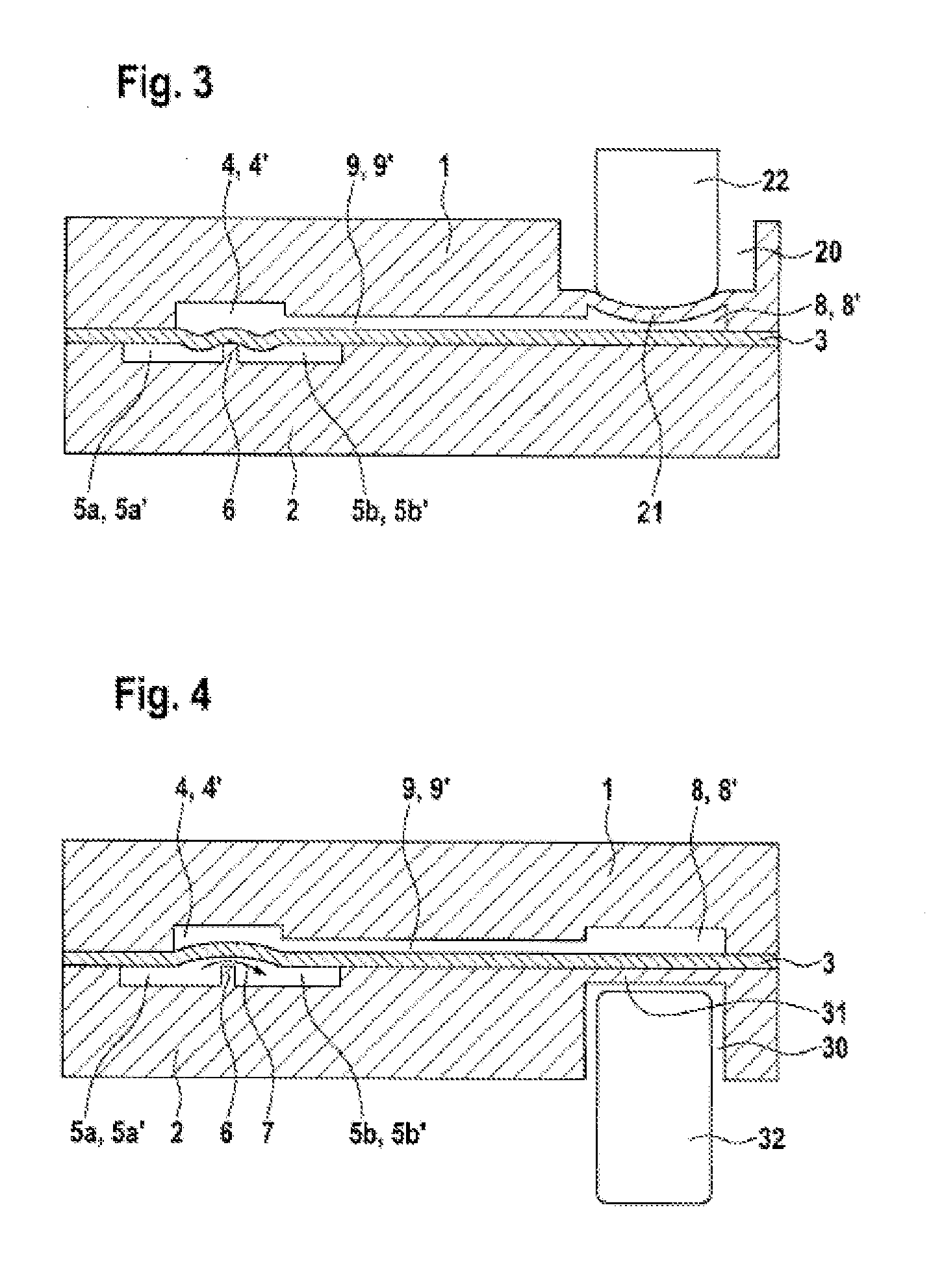Microfluidic component for manipulating a fluid, and microfluidic chip
a microfluidic component and fluid technology, applied in fluid pressure control, laboratory glassware, instruments, etc., to achieve the effect of increasing the pressure in the control fluid and reducing the volume of the second control chamber
- Summary
- Abstract
- Description
- Claims
- Application Information
AI Technical Summary
Benefits of technology
Problems solved by technology
Method used
Image
Examples
Embodiment Construction
[0022]In the figures, identical or functionally equivalent components are respectively denoted by the same reference sign.
[0023]FIG. 1 shows a schematic cross section through a first embodiment of a microfluidic component according to the invention in the form of a microvalve in the non-activated state. The illustrated microvalve comprises a first substrate 1, a second substrate 2 and a third substrate 3, which is arranged between the first substrate and the second substrate. By way of example, the first and second substrate can be embodied from a thermoplastic. The third substrate 3 is made of an elastic material, more particularly a thermoplastic elastomeric film, and is arranged, more particularly sandwiched, between the first substrate 1 and the second substrate 2. Here, the first substrate 1 adjoins the third substrate 3 and, on the side adjoining the third substrate, has a first recess 4, which forms a first control chamber 4′. The second substrate 2 likewise adjoins the third...
PUM
 Login to View More
Login to View More Abstract
Description
Claims
Application Information
 Login to View More
Login to View More - R&D
- Intellectual Property
- Life Sciences
- Materials
- Tech Scout
- Unparalleled Data Quality
- Higher Quality Content
- 60% Fewer Hallucinations
Browse by: Latest US Patents, China's latest patents, Technical Efficacy Thesaurus, Application Domain, Technology Topic, Popular Technical Reports.
© 2025 PatSnap. All rights reserved.Legal|Privacy policy|Modern Slavery Act Transparency Statement|Sitemap|About US| Contact US: help@patsnap.com



